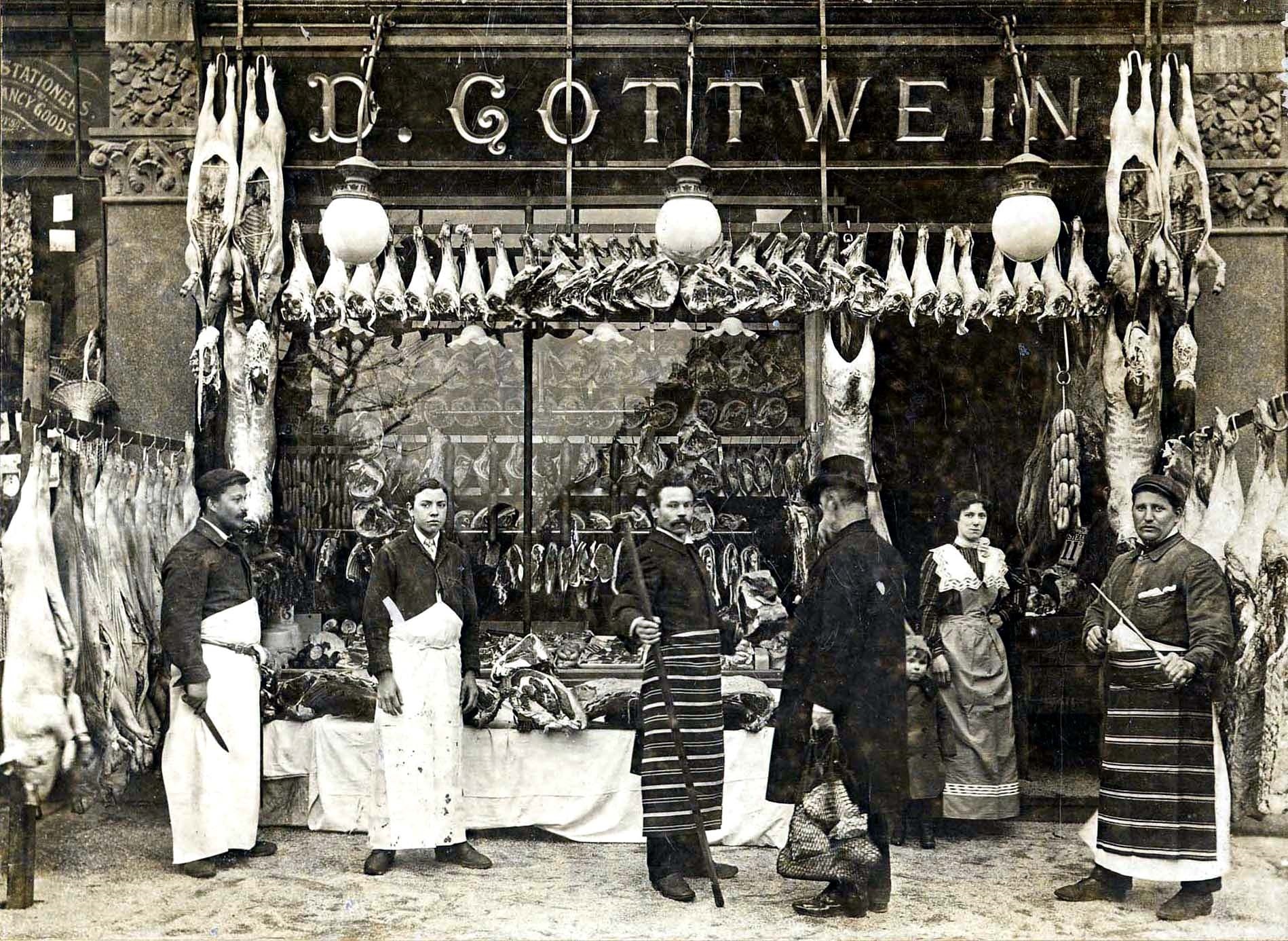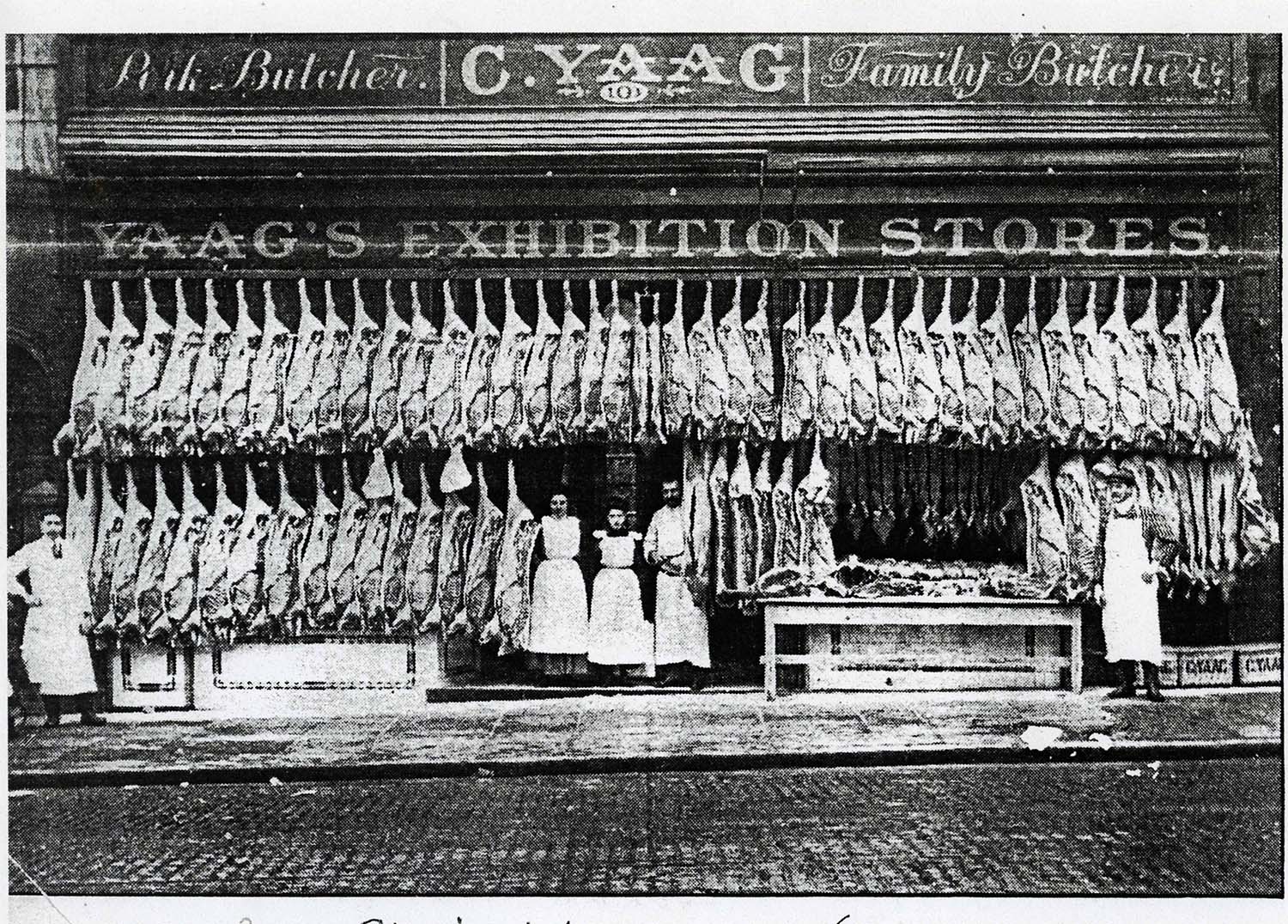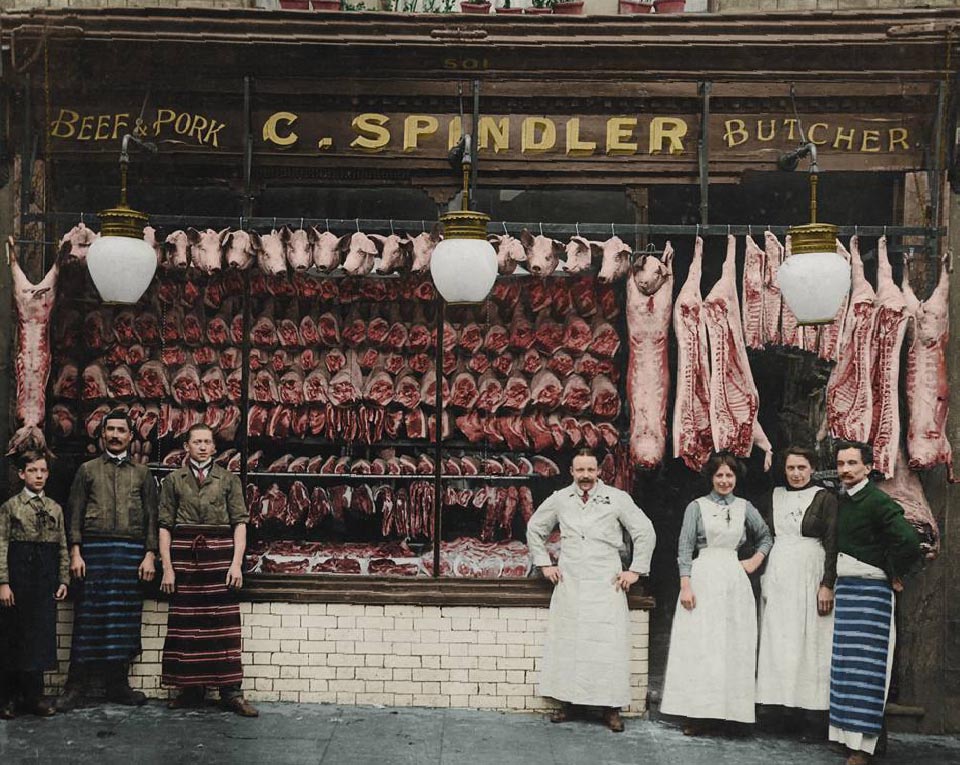German Pork Butchers
Long before kebabs, fried chicken and chow mein became widely available on our high streets, German immigrants created the original takeaway staples: sausages and pork pies.
Large numbers of pork butchers from Hohenlohe, Germany, arrived in Britain in the 19th century, seeking new opportunities. They brought with them skills in processing meats into products such as sausages, hams and other ready meals.
The new arrivals found an eager market in the expanding industrial cities in the north of England and London. More women had begun working in the factories, leaving little time to cook. Cheap pre-cooked meals from the Hohenlohe butchers provided a convenient hot meal after work.
German butchers occupied a niche, as British butchers usually only sold fresh, unprocessed meat. The demand for their products quickly outstripped the supply of skilled butchers, and German families recruited more young men and women from small villages back home. Many set up their own shops, usually family businesses.
They prospered in their neighbourhoods and beyond, often operating several branches.
The outbreak of the First World War brought the success of the Hohenlohe pork butchers to a virtual standstill. Those who were not yet naturalised were held in internment camps for four years and many sent back to Germany.
A few establishments survived but very little remains of the once famous German takeaways.
Top image: C. Spindler Butcher, London (courtesy Gerhard Spindler)








